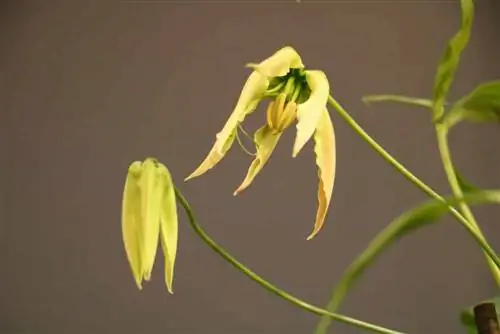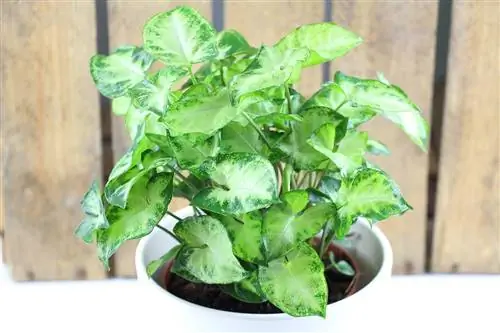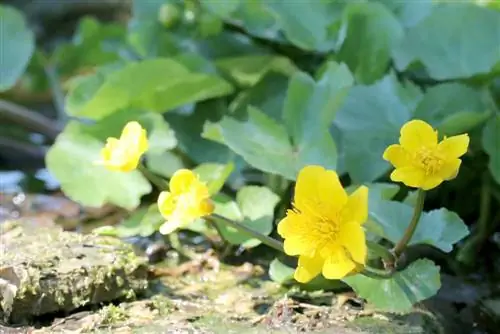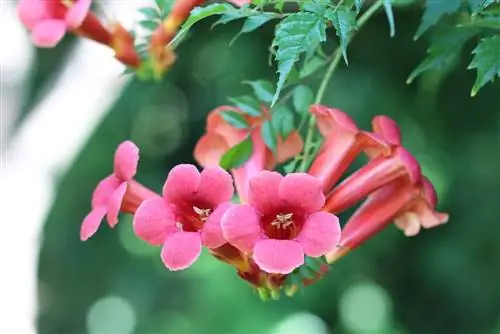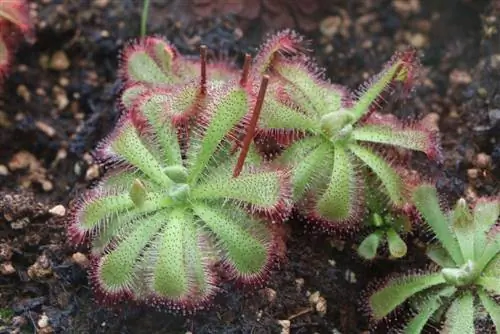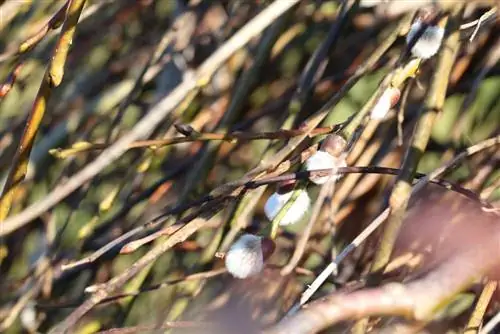- Author admin [email protected].
- Public 2023-12-17 03:39.
- Last modified 2025-01-24 12:45.
Many people know the Crown of Fame or Gloriosa. Some people only know them from the flower shop because they look quite sophisticated. But anyone who takes the trouble to deal with the requirements of this beautiful plant will be happy to bring the crown of fame into their home.
Origin
The crown of glory (Gloriosa) is native to tropical Africa. It belongs to the lily family and is one of the few species known as climbing lilies. This beautiful plant is available commercially from February with beautiful, large flowers because it is grown in greenhouses.
The favorite place
The Crown of Fame wants a bright, sunny place. They need lots of light, so a window spot would be ideal. If you have the opportunity, you can put the crown of fame outdoors from May onwards, but then it should be in a warm place protected from the wind.
Description
The Gloriosa is an attractive, graceful and climbing lily. It has a tuberous rhizome. The shoots can grow up to two meters long. The beautiful large flowers appear on long stems that can be up to 20 cm long from the end of June to August. Depending on the type of plant, the petals can be of different sizes. They are wavy or curled at the edges. The most widespread is the Gloriosa rothschildiana, which attracts attention with its fiery red flowers. A yellow edge and a yellow throat contrast beautifully with the rest of the red of the flower. The leaves of the crown of glory are dark green and shiny. The plant has adhesive organs at the tips of its leaves.
Care
If you buy the Gloriosa in bloom in stores, you just have to water it regularly and offer it a bright location. It is a little more difficult if you have bought a tuber and want to get it to bloom. It is important to ensure that the tuber or bud must not be damaged. Even the slightest injury can cause the tuber to die. Place the tubers lengthwise in the pots and cover the tuber with about 3 cm of permeable soil. It is best to use a mixture of one part compost soil, one part potting soil, another part leaf mold or peat and finally one part sand. This creates a humus-rich and nutritious soil that is also well permeable to water. Now the tuber can be placed in the ground, always paying attention to the bud. It takes a while for the roots to develop and the tuber to sprout. When the above-ground part starts to grow, it happens very quickly, as the plant can grow an impressive 10 cm per day. Incidentally, the culture of Gloriosa can be compared to that of dahlias. The best ambient temperature is around 22°C. The tubers are transplanted in early spring, i.e. in February or March, then the plant begins to sprout.
How to water and fertilize
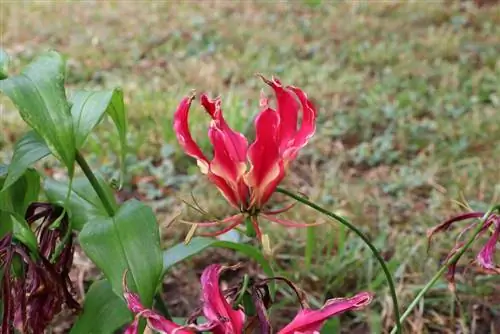
The Gloriosa must be kept constantly moist and is susceptible to increased humidity. This means that the soil must always be watered abundantly, but waterlogging must also be avoided. You always have to find the happy medium. When adding fertilizer, it is best to use a liquid fertilizer and fertilize once a week. From the end of August you can omit fertilizer applications.
Wintering
If you have cultivated your crown of glory in pots, stop watering from the end of September. The leaves turn brown and the plant dies. The withered leaves can then be cut off to approx. 10-15 cm above the ground. Since the crown of glory is not winter-hardy, you have to decide: either you leave it in the pot and overwinter it dry or you store the tuber on dry sand, in any case not below +15° C.
Planting
As already mentioned above, the tubers can be purchased from garden shops. When planting yourself, it is important that the tubers are not planted too deeply in the permeable soil because they have very sensitive sprouts that break easily.
Since the plant is very sensitive to moisture, waterlogging must be avoided at all costs as well as excessive watering. It will take a long time for the first shoot to appear, but once the Gloriosa has started to grow, it will continue to grow very quickly - in fact, it grows up to 10cm every day!
The rhizomes (i.e. the first sprouts) should only be planted in the garden when it is certain that there will be no more frost, ideally from the end of April to mid-May. You can of course grow it indoors in a pot, then the tuber can be planted in February or March. The pot should be kept as warm as possible, ideally near a heater.
Propagation of plants by division
You can increase the Crown of Fame in two ways. One can propagate by seeds, but the simpler solution is vegetative propagation by the secondary tubers. These are carefully placed in pots at the beginning of March and covered with soil. You should add a small trellis to it, because the Gloriosa needs a trellis to grow up. The tubers will sprout again at around 18°C. If necessary, the plants can be repotted again. The Gloriosa's growth cycle begins again in a very straightforward manner.
Propagation of plants from seeds
Propagation by seeds is more difficult. This type of propagation is lengthy and difficult. A heated small greenhouse is recommended for cultivation, as the seeds need a constant temperature of 20 °C to germinate. The seed is placed in a soil mixture consisting of sand, peat and compost soil. If small plants have emerged from the seeds, then only very little should be watered because the plants could rot very quickly. Flower lovers can expect the first flowers after about two to four years, but vegetative propagation is quicker.
Plant pests and care errors
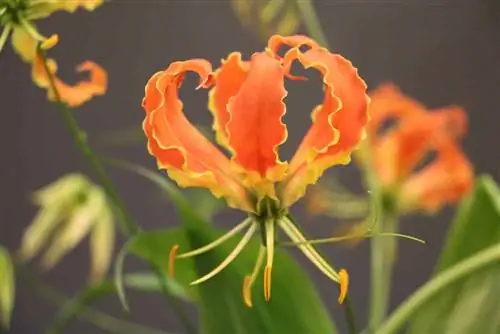
The Gloriosa's little enemy is the aphid. You should always observe the plant and act immediately if necessary. Large fluctuations in temperature can also be harmful to the plant, as can larger fluctuations in humidity. You can see this by the brown spots on the leaves and buds. If the plants receive too little light, the buds can dry out and fall off. You should pay attention to the right fertilizer, otherwise discoloration of the plants can occur.
Conclusion
Anyone who buys a crown of glory can have a lot of fun with it, provided they got good advice when purchasing it. Crown of Fame may not be a beginner plant, but it should still be fun.
Interesting facts
As it comes from warm climes, it is not hardy and is best suited for keeping in Central Europe in the warm summer months as a container plant that is placed under cover in winter.
The six fire-red flowers with the yellow edge and the unusual shape are definitely an absolute eye-catcher. Due to the curling of the leaves, the crown of glory is often grown in a trellis, similar to the passion flower.
In addition to the full-grown flowers, you can also get tubers in stores with which you can grow the plants yourself.
Incidentally, you don't have to put it in the garden - the crown of fame is also very suitable as a houseplant.

